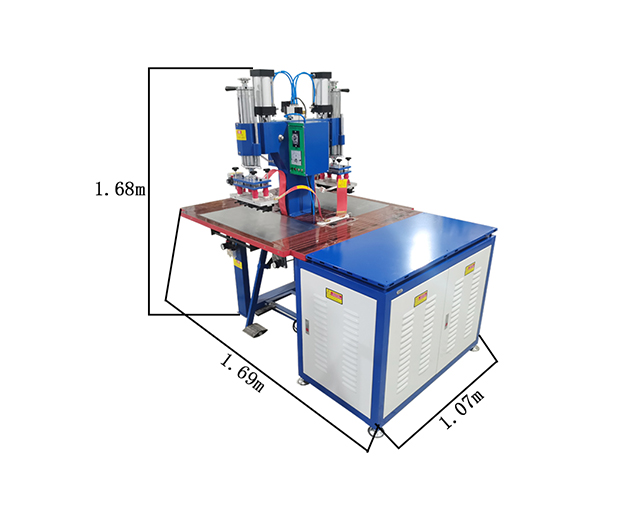Time:2025-08-22 Views:1 source:News

Rollers are the core components of embossing machines, responsible for applying pressure and transferring patterns onto materials such as paper, fabric, leather, plastic, and metal. The selection of roller materials directly impacts the embossing quality, durability, and compatibility with different substrates. Embossing machine rollers must balance hardness (to maintain pattern precision), wear resistance (to withstand repeated pressure), and, in some cases, heat conductivity (for heat-assisted embossing). Common roller materials include steel alloys, rubber, silicone, and composite materials, each tailored to specific embossing applications and substrate types.
Steel alloy rollers are widely used for heavy-duty embossing of rigid materials like metal sheets, thick cardboard, or plastic panels. High-carbon steel (e.g., 1045 steel) and alloy steel (e.g., 4140 steel) are preferred for their high hardness (55-65 HRC after heat treatment) and excellent wear resistance. These rollers undergo precision machining—including CNC turning, grinding, and engraving—to create detailed patterns with a tolerance of ±0.01 mm, ensuring consistent pattern replication across large batches. For example, 4140 steel rollers, with a tensile strength of 1000-1200 MPa, are ideal for embossing aluminum sheets used in automotive trim or decorative metal panels, as they can withstand the high pressure (50-100 MPa) required to deform the metal without losing pattern sharpness. Some steel rollers also feature a chrome plating (5-10 μm thickness) to enhance corrosion resistance and reduce friction, extending their service life to 500,000+ embossing cycles.
Rubber rollers are suitable for embossing flexible substrates like fabric, thin paper, or non-woven materials. Natural rubber and synthetic rubber (e.g., nitrile rubber, neoprene) are used, with hardness ranging from 30 to 80 Shore A. Softer rubber (30-50 Shore A) is used for delicate substrates like silk or tissue paper, as it applies even pressure without damaging the material. Harder rubber (60-80 Shore A) is preferred for thicker fabrics like cotton or polyester, providing sufficient pressure to transfer deep patterns. Rubber rollers are often coated with a textured surface or engraved with patterns using laser etching, and they can be easily replaced or reconditioned when worn—making them cost-effective for low-to-medium volume embossing. For instance, nitrile rubber rollers (resistant to oil and chemicals) are used in embossing synthetic leather for furniture or bags, as they maintain flexibility even after prolonged exposure to heat (up to 120°C) during the embossing process.
Silicone rollers are specialized for heat-assisted embossing (also known as hot embossing) of heat-sensitive materials like plastic films, foam, or heat-sealable fabrics. High-temperature silicone (e.g., silicone rubber with a Shore A hardness of 50-70) is used, as it can withstand temperatures up to 250°C without degradation. Silicone’s excellent heat conductivity (0.2-0.3 W/m·K) ensures uniform heat distribution across the roller surface, preventing hot spots that could scorch the substrate. These rollers are often used in the production of packaging films (e.g., PET or PVC films for snack packaging) or decorative foam sheets, where heat is required to soften the material and set the embossed pattern. Silicone rollers also offer good release properties—meaning the substrate does not stick to the roller after embossing—reducing production downtime and improving efficiency.
Composite material rollers, combining two or more materials (e.g., a steel core with a rubber or silicone outer layer), offer the benefits of multiple materials. For example, a roller with a 4140 steel core (for structural strength) and a 50 Shore A silicone outer layer (for heat resistance and flexibility) is ideal for embossing heat-sensitive paper used in gift wrapping or greeting cards. The steel core provides stability and precision, while the silicone layer protects the paper from heat damage and ensures even pressure. Composite rollers are also used in dual-process embossing, where both pressure and heat are applied, and they can be customized with different outer layer thicknesses (1-5 mm) to adjust for substrate thickness variations.
Material selection for embossing machine rollers depends on several factors: substrate type (rigid vs. flexible, heat-sensitive vs. heat-resistant), embossing pressure (low vs. high), production volume (low vs. high), and pattern complexity (simple vs. intricate). For example, a manufacturer embossing thin tissue paper for luxury packaging would choose a soft rubber roller (30 Shore A) to avoid tearing the paper, while a company producing decorative metal sheets would opt for a chrome-plated 4140 steel roller to handle high pressure and maintain pattern precision. Regular maintenance—such as cleaning roller surfaces to remove substrate residues and checking for wear—also extends the life of the roller, ensuring consistent embossing quality over time.
embossing machine roller materials are diverse, with each type optimized for specific applications. Steel alloys, rubber, silicone, and composites each offer unique advantages, enabling embossing machines to process a wide range of substrates and produce high-quality, consistent patterns for industries like packaging, textiles, automotive, and consumer goods.
Read recommendations:
HF RF slide table welding machine shoe materials uppers sandals embossing shoes
Semi-automatic plastic bag making machine
Single head neck reeling machine
TPU embossing machine Vendor.The impact of using inferior PP embossing machine packaging tape
Cleaning method of hot melt adhesive laminating machine.PVC fabric welding machine
Complete control over products allows us to ensure our customers receive the best qualityprices and service. We take great pride in everything that we do in our factory.
